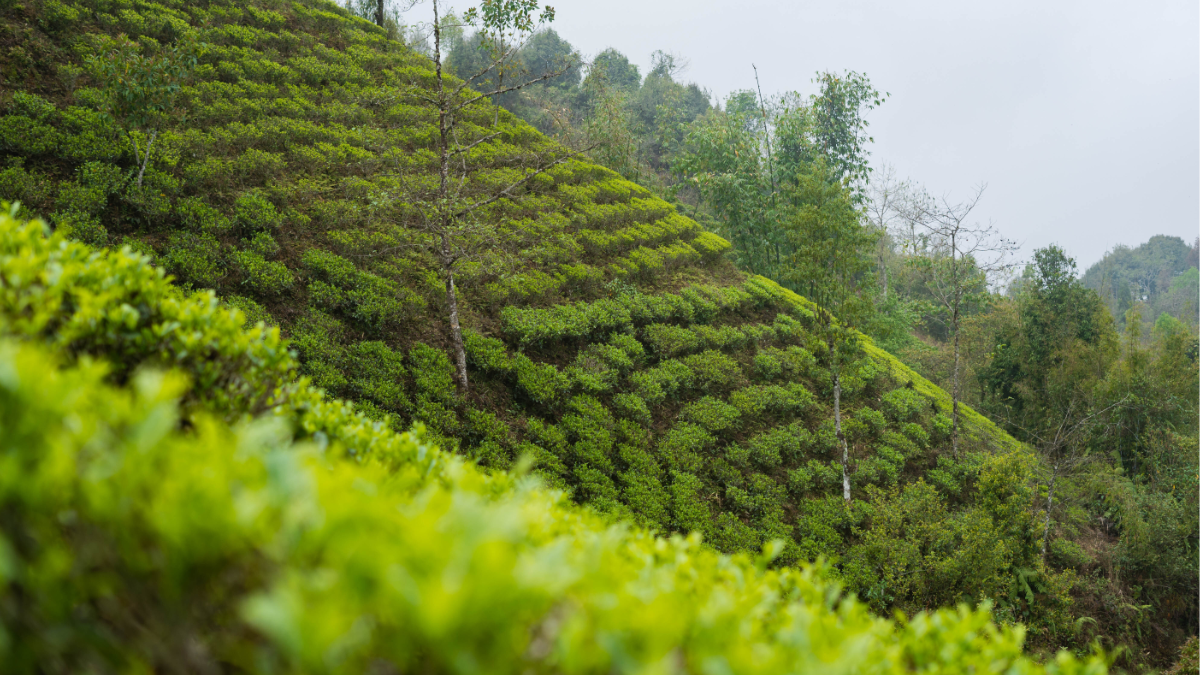
Nepal Tea Collective’s Rose Reserve Tea
A rare and remarkable leaf emerged during the July 2022 harvest at the Kanchanjangha Tea Estate and Research Center, nestled in the highlands of Eastern Nepal. Serendipitously, these leaves landed under the sharp senses and experimental craftsmanship of a prodigious nineteen-year-old tea-maker, Nikesh Gurung, who, throughout the night, created Nepal Tea Collective’s Rose Label Reserve, a black tea with distinct, surprising roseate flavor and aroma.
Tea experts who tasted the tea were struck by its aroma and rose-petal flavor, layered with rich, malty caramel notes and a lingering sweet muscatel aftertaste. Priced at $100 for 100 grams, the tea is not just a mark of the enchanting flavors fostered by Nepal’s unique high-altitude micro-climates and terroir but also an embodiment of the keen talent of a new generation of tea-makers.
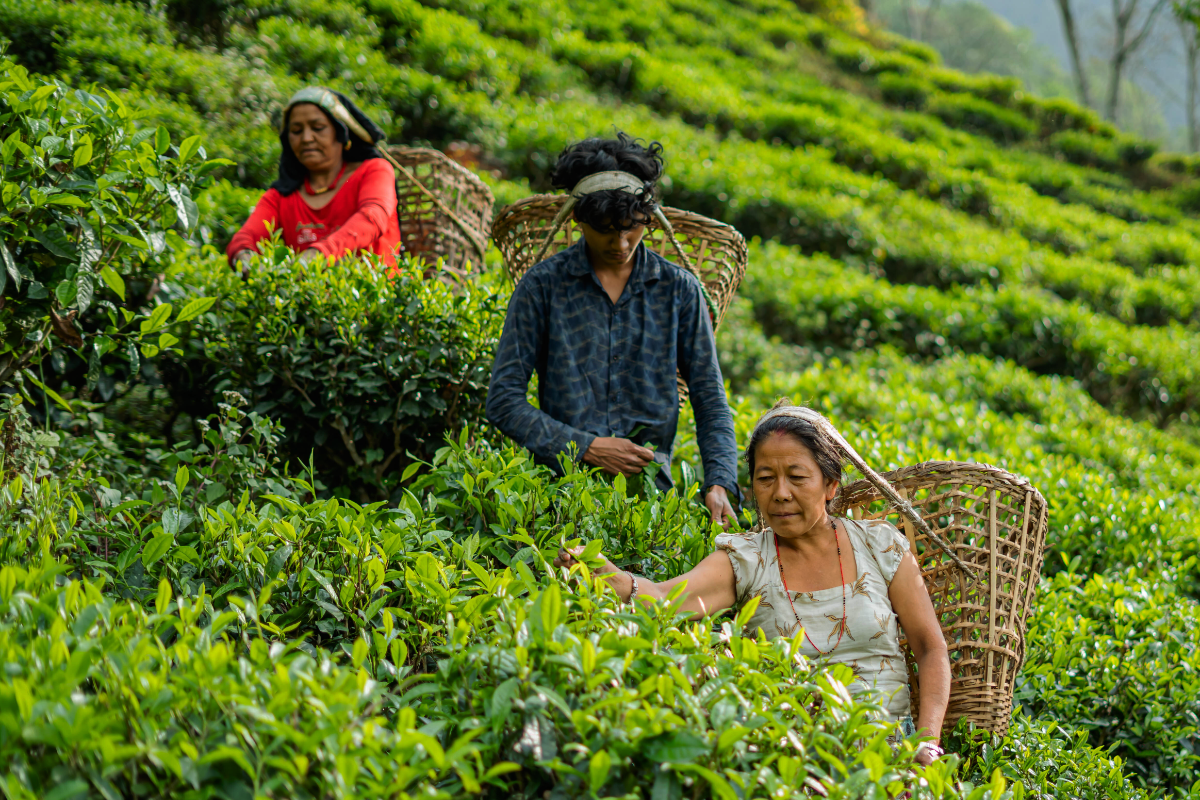
This year’s rose reserve was created with scrupulous care. Tea cultivars Bannockburn 157 and a rare Wild Assamica were isolated and reared by tea farmers on the estate. The timing for harvesting these tea leaves was crucial, requiring an exact supply of rainfall and sunshine to foster uniform roseate aromatics that flavor and give fragrance to the tea leaves.
Related
Origins: Kanchanjangha Organic Nepal Tea
The leaves were harvested during the second flush, and tea-maker Chandra Bhattarai, responsible for crafting this year’s Rose Label Reserve, awaited their arrival with anticipation. The quantity of leaves is limited, guaranteeing exclusivity. In 2022, Nikesh Gurung produced only 50 kilograms.
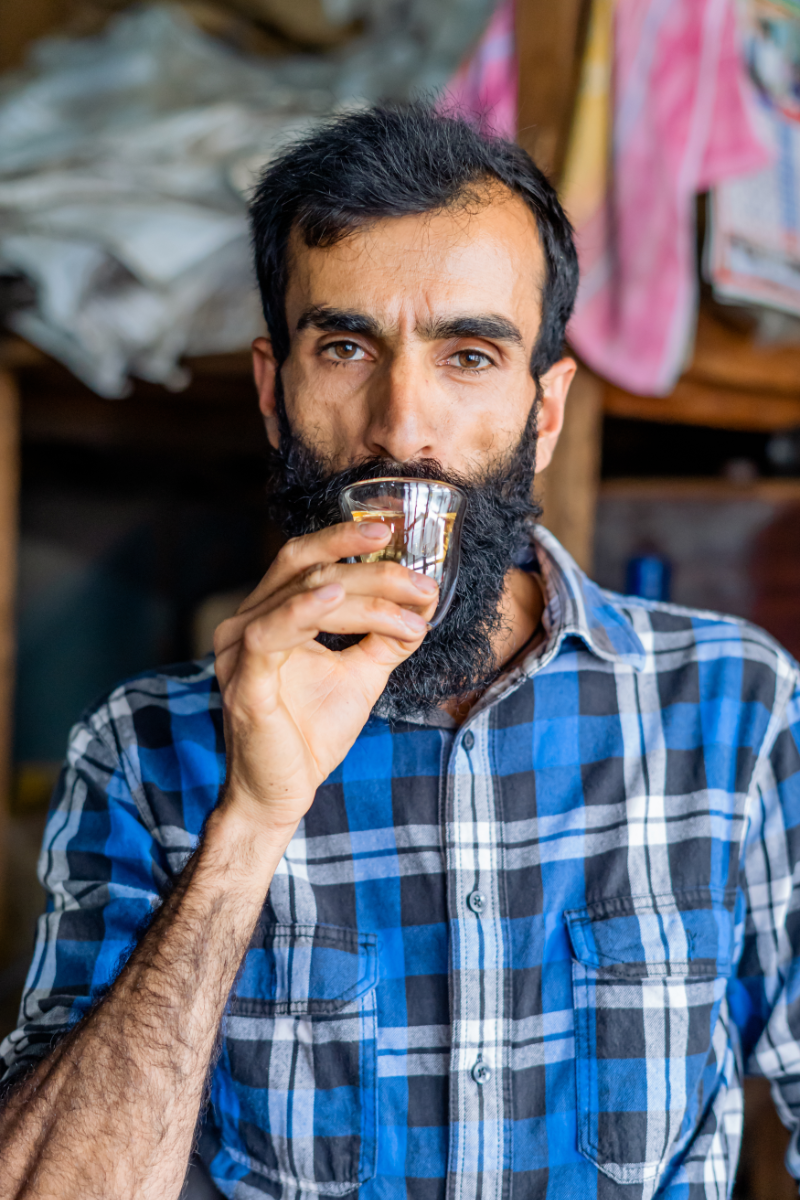
For Chandra, who trained under multiple tea makers in Illam and from tea makers from Darjeeling, this was an honor and a challenge. “I knew that recreating the magic of last year’s Rose Label Reserve would be no easy feat,” he said. “But I was eager to embrace the spirit of experimentation and weave my own touch into the process.”
Chandra balanced precision and intuition in processing once the tea leaves arrived. He began by withering the leaves until they had lost the appropriate amount of moisture and were sufficiently softened. Chandra then delicately rolled the leaves, taking care not to break them.
Nepal Tea Collective founder Nishchal Banskota anticipated an excellent tea and, importantly, what it would say about the skill of Nepali tea makers—in fully realizing Nepal’s unique microclimate and mineral-rich terroir.
Banskota explained that Chandra was born in Ranitar in the remote, hilly region of the Panchthar district, which borders India’s tea-growing region. His family lived next door to the factory built on the Kanchanjangha Tea Estate, where his older brother found work as an assistant to the tea maker.
Nischal, who grew up on the Kanchanjanga estate, recalls, “Chandra’s brother talking about how tea making is an art and how proud he felt that people, especially Germany and Japan, enjoyed the tea he was making. Those stories got Chandra intrigued and inspired to tea making. Nine years ago, as soon as he finished college, he joined the factory as a trainee and is now the primary tea maker under the supervision of our factory manager.”
Rose is a popular flavor, ranked among the world’s top five* scented teas, but Chandra’s process is pure. The teas in his care are delicately scented by nature from a cultivar whose aromatic chemicals include geraniol, roses’ most important odorous component. Blenders add rose petals to scent the leaves—Chandra does not. The aroma of rose blossoms soaked the factory air as the leaves under his care completed the oxidation process.
Days passed as the tea rested, allowing the fragrance to mature and fully rise to the surface of the tea leaves. Finally, the day of the tasting arrived. For Chandra, the moment of truth was impending: Had he captured the essence of the Rose Label Reserve? However, it was with the calm confidence of skilled tea-makers, who engage in deep conversations with the tea leaves they are crafting and come to know them intimately, that Chandra awaited Nishchal’s arrival.
The first brew of the Rose Label was reserved for Nishchal’s exacting palate. Chandra watched as Nishchal took in the fragrance of the tea and carefully sipped the brew. Their excitement was palpable, and when Nishchal exclaimed his approval, Chandra’s eyes sparkled with relief and joy.
“It was a challenge, but the team’s efforts and the dedication of the tea farmers made it all worthwhile,” Chandra shared. This year’s Rose Label Reserve has emerged with a slightly different flavor profile, with distinct notes of camphorous rose made more complex with middle notes of sweet eucalyptus, honey, and brown sugar, and a lingering, refreshing aftertaste of circusy mint.
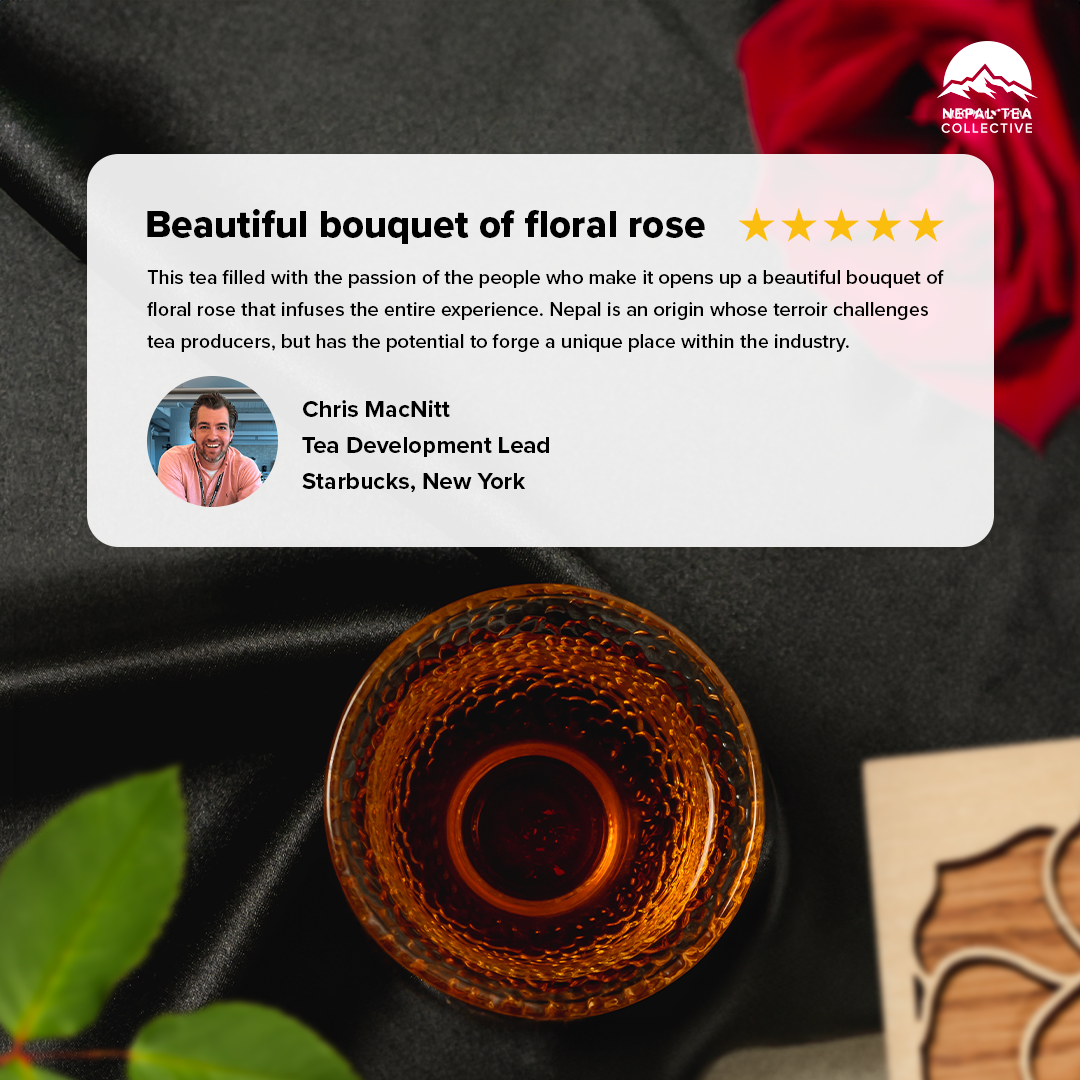
This intriguing flavor profile springing from the refined skills of a young tea artisan is an inspiring milestone for all Nepali tea-makers and the Nepal Tea Collective. Luxury in tea is a label applied to expensive Pu’er, Longjing green tea, and rare oolongs like Da Hong Pao, with a heritage reaching back to the centuries-old Ming dynasty. These centuries-old tea-making practices give rise to teas that retail for thousands of dollars per kilogram.
In comparison, Nepali tea history is still in its infancy. However, it is exhilarating to witness how rapidly it is evolving into a distinct culture and creating a space for itself with its own intensely unique, premium teas. The heart, ingenuity, and spirit of the young tea-makers who cultivated and crafted the rare Rose Label Reserve is a sign that the Nepali tea culture is growing, bringing a fresh and exciting verve to the tea world. As tea lovers worldwide savor this brew, they also witness tea history in the making among the highland terrains of Nepal.
*Jasmine, Mint, Osmanthus, Hibiscus, Rose. Tea is hydrophilic and can draw scent from aromatic chemicals released by nearby plants, but the highly aromatic Bannockburn 157 (B157) cultivar contains significant concentrations of Linalool oxide II, linalool, methyl salicylate, geraniol, and 2-phenyl ethanol. It was produced by the Tea Research Association’s Tockai Research Center in Jorhat, India.
Tasting Notes: Red Label Reserve
By Chris MacNitt
Starbucks Tea Development Lead
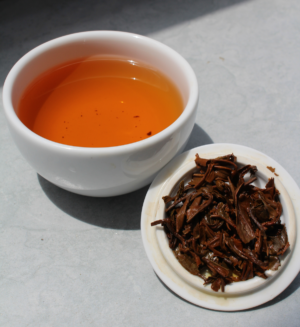
Estate: Kanchanjangha Tea Estate and Research Center
Tea Maker: Chandra Bhattarai
Tea Bush: Bannockburn 157 + Wild Assam
Process type: Black
Origin: Ranitar, Panchthar District, Nepal
Altitude: 3,900-5,400 ft (1,300-1800 m)
Pluck dates: July 2023
Dry Leaf
Feel: soft texture with good give
Aroma: Bold Rose aromatics, ambient florals, subtle nectarine
Appearance: Twisted, black leaf with beautiful golden tips
Wet Leaf
Appearance: Predominance of whole buds and leaves. Some third leaf present.
Aroma: Rose and nectarine with slight honey intonations
Cup
Appearance: Bright, rich Golden color
Taste: Rose florals, a touch of honey, malt in the mid-pallet, medium body, pleasant astringency in the finish
Suggested Preparation
Quantity: 3 grams of tea
Water: 8oz of water
Temperature: 195F
Steeping time: 3-4 minutes (tea offers three steepings)
Notes: Having tasted this tea at several temperatures, 195F provides the best expression of black tea and the signature Rose characteristics of the cultivar. If you desire more floral, drop the temp down to 190F. If you are looking for a bolder flavor, increase it to 203F. I would not exceed 203F as it tends to burn off the leaf at this early stage of maturation.
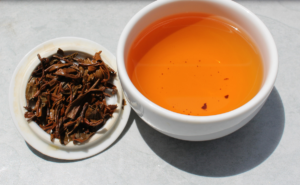
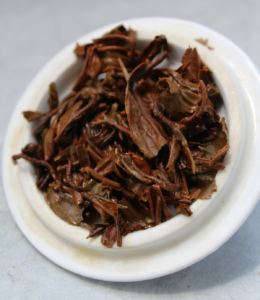
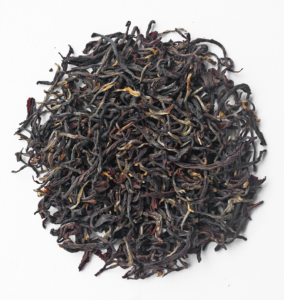
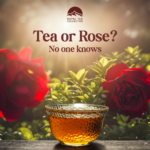
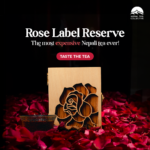
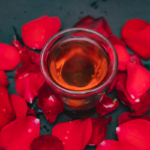
Nice article, it made me feel as if I tasting the tea being made with the first sip. Good to see Nepal tea makers experimenting with artisinal tea.
This was me too tell Me.Navin Baskota during tasting that this tea is made from BB 157, Ms.Alison of Karma tea, London assigned me to go to kumchenjhonga tea estate and taste their tea on her behalf, this Starbucks tea taster too was there, we tasted various tea samples and out of many tea samples when I tasted this tea i recognised and,i explained them about this wonderful clone inherent character of rose aroma. But no where he is mentioning my name. How selfish are the people in tea industry 😯
This was me who told Mr.Nischal Baskota during tasting that this tea is made from BB 157, Ms.Alison of Karma tea, London assigned me to go to kumchenjhonga tea estate and taste their tea on her behalf, this Starbucks tea taster too was there, we tasted various tea samples and out of many tea samples when I tasted this tea i recognised and,i explained them about this wonderful clone inherent character of rose aroma. But no where he is mentioning my name. How selfish are the people in tea industry 😯
PS. Correction of few spelling
Apologies on this uncle. It was sincere mistake from our side specifically on this particular article. We did not dive into 2022’s history rather focussed on the 2023 production. In every other article release and our main website we have mentioned you as the main discoverer! We have made the necessary changes here as well and indeed you were the expert we talk about in the article that opened our eyes to this amazing cultivar. We are eternally grateful to you for this and look forward to your continued guidance on helping the Nepali tea industry thrive! Sincere apologies on this again. Thanks so much uncle and looking forward to working together on yet another marvel with you! 🙂
Nice article. These types of articles really encourages a number of tea makers to invest in this market.
Thanking you so much for your sincere response, i appreciate from bottom of my heart.